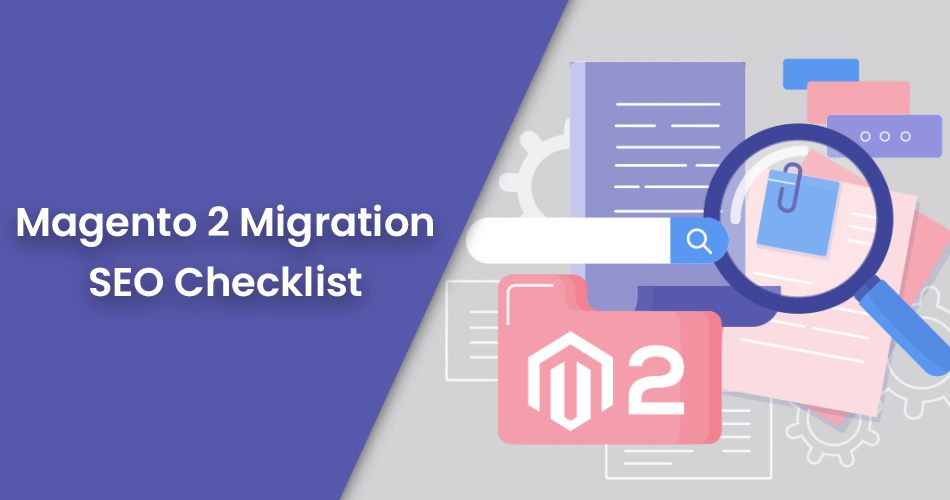Whether you are building a new store in Magento 2 or migrating to Magento 2 from Magento 1, it is inevitable to keep a few things in mind to make sure that you do not lose your traffic, revenue, and customers with migration.
Yet not migrated to Magento 2? Create your Migration Plan now.
Migrating to Magento 2 is not an easy task but it is unavoidable. So we have prepared an SEO checklist for Magento 2 Migration that will help you smoothen your transition process.
Contents
Magento 2 Migration SEO Checklist 2022
Define Migration Timeline
The first thing to do when you plan for migration is to determine the migration scope. Jot down the Extensions and Customizations that you are using right now. Later on, you can consult the developers to know about its compatibility. Mostly, the integrations are compatible with both platforms. But some features might differ from Magento 1. So it is advantageous to test them before migration.
Go through all the customizations of your store so you are aware of the time frame of your Magento store migration. It is advisable to know the timeline of Magento 2 migration so that you get an estimate of the process.
Review Website Data
This is the most important step in Magento 2 Migration SEO Checklist. You must be sure that the products and categories are migrated properly. The checklist includes category description, URLs, meta title and description, H1 tags.
After migration, you must verify whether all the products, images, attributes, and alt tags have been migrated properly. If you fail to check this, you are at a great loss in terms of Search Engine Optimization.
Examine Tags and XML Sitemap
Before migration, all the products must have canonical, alt, sitemap, and Hreflang tags configured. If you have more than one website targeting various locations, you must review Hreflang tags. These tags help to avoid identical issues. Use Hreflang Tags Extension for Magento 2 to easily enable Hreflang tags for all pages.
Next, review your XML sitemap. You probably want to add some pages or remove some of them from the XML sitemap. Do the necessary changes and then you are ready to migrate your website.
Page Redirects
Before starting the migration, list all the URLs. So after migration, you must ensure that all the old URLs work on the migrated website as well. If the URL does not correspond it will show a 404 page and that loses potential customers. Use 301 redirects to change the URL of your pages. This helps the search engine know that users who land on the old URL must land on the new one.
Make sure that the content of the new page must be the same as the old one. If you redirect customers to the home page with the product page URL, it will frustrate them and finally, they will leave your site.
Pre and Post Launch Tests
Do not rush to migrate your website. You must check everything you have done. Check the speed of your website. Customers like everything as soon as possible. A second delay may lead to a loss of revenue.
After migration, first of all, you need to configure the new robots.txt file so that search engine crawlers can go through your website and index it. Next, configure the new Sitemap to Google Search Console in order to track the performance. Constantly keep a watch on redirects, crawls, and indexes to ensure if everything works fine or can be changed on time.
Over to you:
I hope, the above checklist helps you prepare your Magento store for migration and rectify the issues if you face a decline in performance.
Also, update your Magento 2 store and add a new sales channel for your customer with Magento 2 Mobile App Builder.
If you need help with Magento 2 Migration, avail of our Magento 2 Migration Service. We will deeply analyze all the consequences and fix them with zero downtime and security.
The benefits that Magento 2 offers are endless. Migrate to Magento 2 and grab the opportunity of a fully optimized Magento 2 store.


